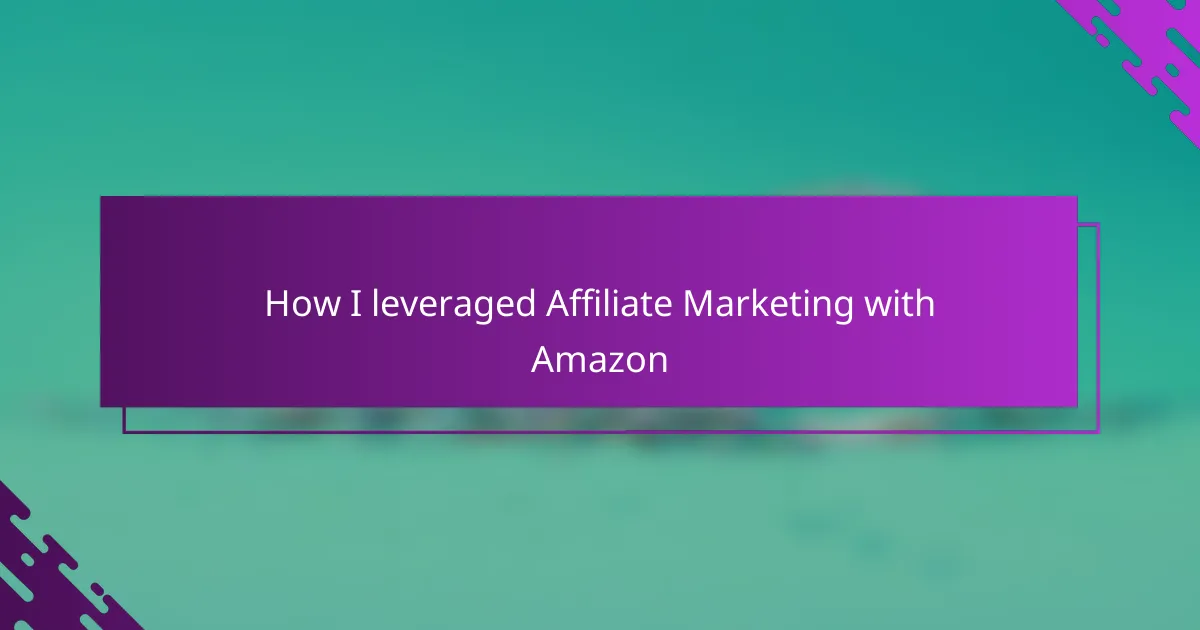Key takeaways
- Affiliate marketing allows bloggers to earn commissions by promoting products they genuinely trust, fostering authenticity and connection with their audience.
- Amazon’s Affiliate Program offers easy access to a wide range of products, enhancing trust due to the brand’s recognition, and includes a 24-hour cookie duration for purchases.
- Effective integration of affiliate links within content is crucial; subtle placements, relevant formats, and understanding audience behavior can significantly impact clicks and conversions.
- Patience, authenticity, and adaptability are essential for long-term success in affiliate marketing, allowing for growth in both traffic and earnings.

Introduction to Affiliate Marketing
Affiliate marketing, at its core, is a simple concept: you promote products you believe in, and when someone buys through your link, you earn a commission. I remember the first time I realized this potential—it felt like a door opening to passive income without the pressure of creating my own products. Have you ever wondered how bloggers make money without overwhelming their readers?
For me, affiliate marketing became more than just a revenue stream; it was a way to genuinely share products that added value to my life and my audience’s. It’s rewarding to recommend something I trust and see that trust convert into tangible support for my blog.
This model thrives on authenticity, which is why it resonated with me immediately. After all, isn’t it more convincing to hear about a product from someone who’s actually used it? Affiliate marketing builds that honest connection between blogger and reader, making it a powerful tool in personal blogging.
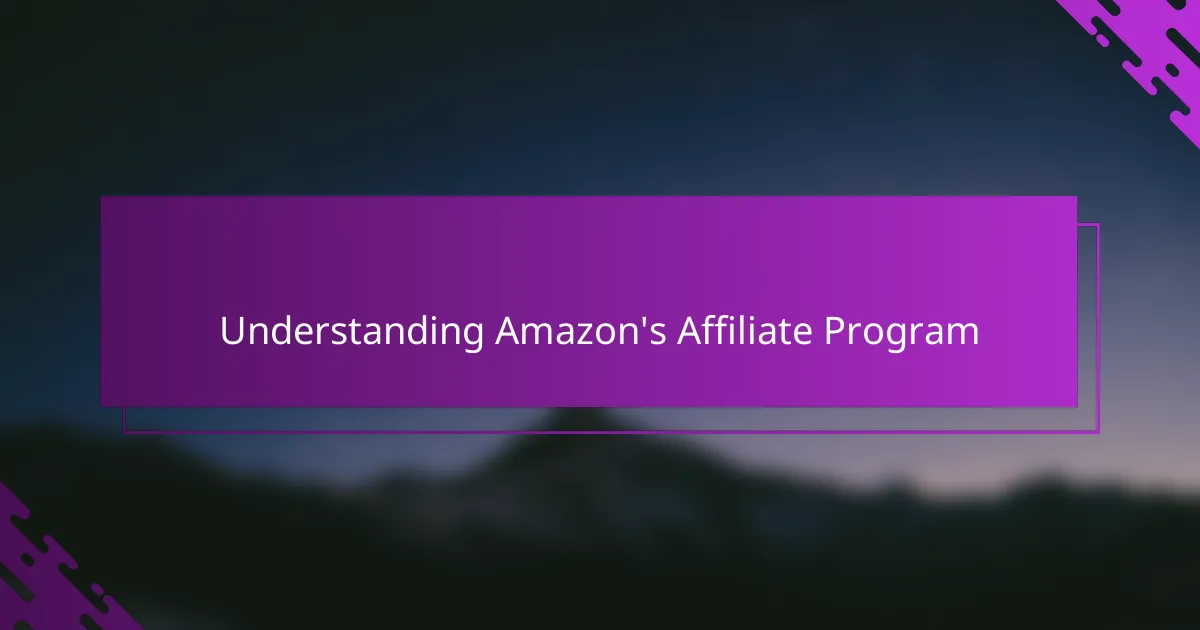
Understanding Amazon’s Affiliate Program
Amazon’s Affiliate Program, known as Amazon Associates, is one of the most accessible ways for bloggers like me to start earning. I appreciated how easy it was to join—sign up, grab your unique links, and start sharing. Have you noticed how the program offers commissions on millions of products, which means almost any niche can find something relevant?
What stands out to me is the trust factor Amazon has built over the years. When I share a link to a product on my blog, I know readers feel confident clicking through because they recognize the Amazon brand. This trust makes recommending products feel natural, not pushy.
Another thing I found clever about the program is the cookie duration—they give you credit for any purchase the reader makes within 24 hours of clicking your link. It might seem short, but in my experience, that window is often enough, especially with readers who come prepared to shop. Doesn’t that sound like a fair balance between opportunity and accountability?
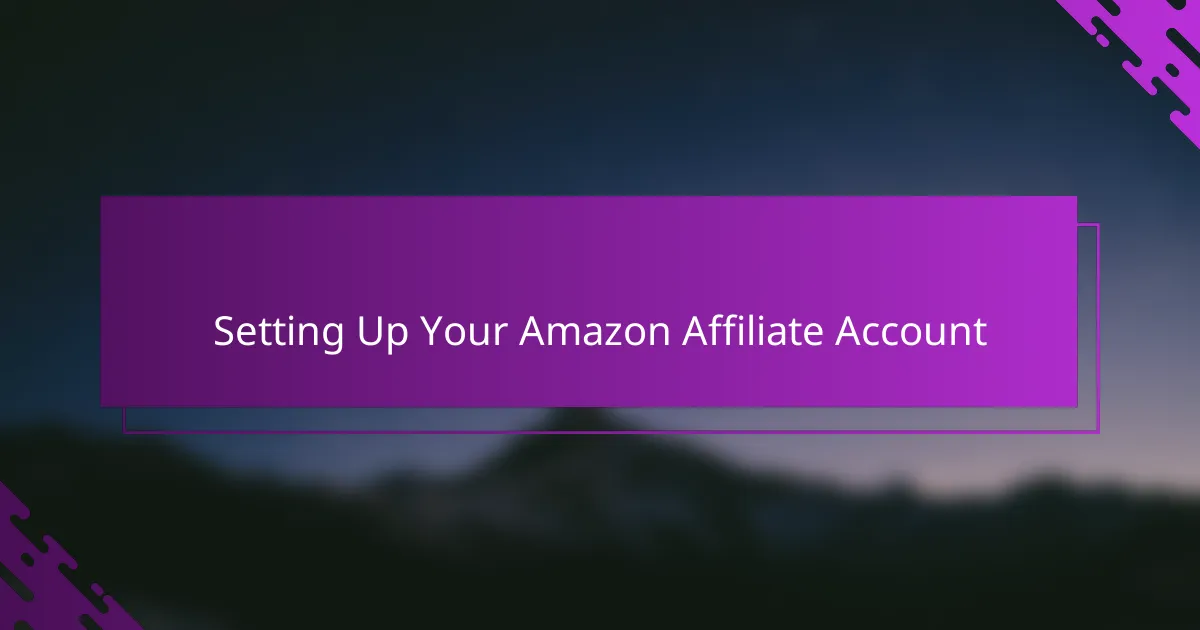
Setting Up Your Amazon Affiliate Account
Setting up my Amazon Affiliate account was surprisingly straightforward, but I made sure not to rush through the details. When you apply, Amazon asks for basic info like your website details and how you plan to drive traffic, which really made me think about my blog’s purpose. Have you ever paused to consider how defining your niche clearly can actually make this process smoother?
One thing that caught me off guard was the approval process. At first, I wasn’t immediately accepted—I had to make a few qualifying sales within 180 days. This part felt challenging, but it pushed me to create better content and strategically place my links. Looking back, that initial hurdle was a helpful nudge to focus and refine my approach.
Finally, customizing your affiliate links is where things start to get fun. I loved how Amazon lets you create simple, trackable links that blend seamlessly into my posts. It’s like having a personalized gateway that respects both the reader’s experience and my branding efforts. Don’t you think a smooth, trustworthy link makes all the difference when encouraging someone to click?

Integrating Affiliate Links in Your Blog
One thing I quickly learned was that placing affiliate links naturally within my content made all the difference. Instead of bombarding readers with obvious ads, I wove product mentions into stories or tips, which felt more genuine and kept the flow intact. Have you ever clicked on a link that felt forced? That’s exactly what I wanted to avoid.
I also experimented with different formats—sometimes embedding links in text, other times adding clear call-to-actions or even product images. From my experience, subtlety works best when it invites curiosity rather than demanding attention. It’s like sharing a helpful recommendation with a friend rather than selling a pitch.
What surprised me the most was how small tweaks in link placement could impact clicks and conversions. For instance, placing a link near the end of a useful tutorial often caught readers just as they were ready to take action. It made me realize how important it is to understand my audience’s journey through the post. Have you thought about where your readers might be most receptive?
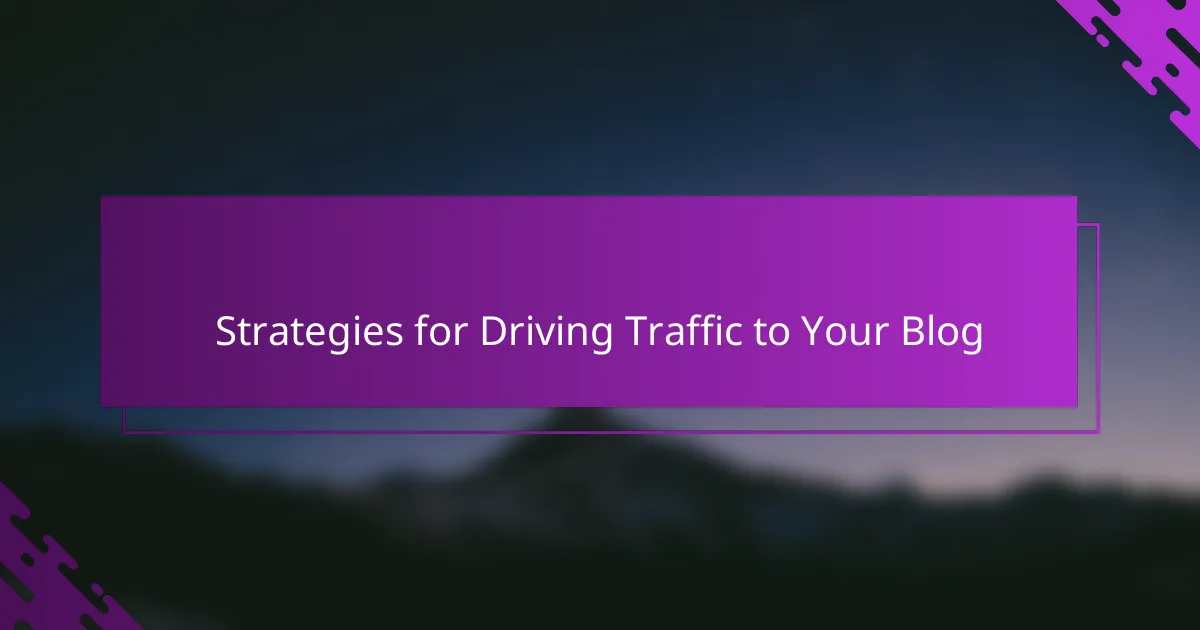
Strategies for Driving Traffic to Your Blog
When I first started driving traffic to my blog, I quickly realized that relying solely on organic search wasn’t enough. Sharing my posts consistently on social media platforms like Pinterest and Instagram helped me reach a broader audience, and I found that tailoring my content to what people were actively searching for made a big difference. Have you noticed how certain pins or posts suddenly get more traction when they tap into trending topics or seasonal interests?
Another strategy I found effective was engaging with other bloggers and communities within my niche. Commenting on relevant blogs and participating in forums created genuine connections that brought curious visitors back to my site. In my experience, these interactions aren’t just about traffic; they nurture relationships that encourage readers to trust your recommendations, which is crucial for affiliate marketing.
I also experimented with email newsletters to maintain a steady flow of return visitors. Sending personalized updates with sneak peeks or exclusive tips felt like having a direct conversation with my readers. Isn’t it rewarding when someone replies to your email, showing real interest? It reminded me that blogs shouldn’t just attract visitors—they should build a community.
![]()
Tracking and Optimizing Affiliate Earnings
Tracking my affiliate earnings became a game-changer once I started using Amazon’s reporting tools. The dashboard shows me which links perform best and which products spark the most interest from my readers. Have you ever felt that moment of clarity when the numbers finally tell a story? For me, it’s like having a direct conversation with my audience about what truly matters to them.
Optimizing earnings isn’t just about watching stats; it’s about experimenting with those insights. When I noticed certain product categories brought in more clicks, I shifted my focus to create content around those themes. I realized small changes—like adjusting the link placement or tweaking my call-to-action—could boost conversions in ways I hadn’t anticipated. Have you tried making tiny tweaks and been surprised by the results?
One tricky part I’ve faced is understanding how seasonal trends affect buying behaviors. Tracking sales over time helped me plan content that aligns with peak shopping periods, turning casual readers into buyers. It feels rewarding to see those well-timed posts perform better, confirming that paying attention to analytics isn’t just a chore—it’s essential. Have you found that timing can turn a good affiliate link into a great one?
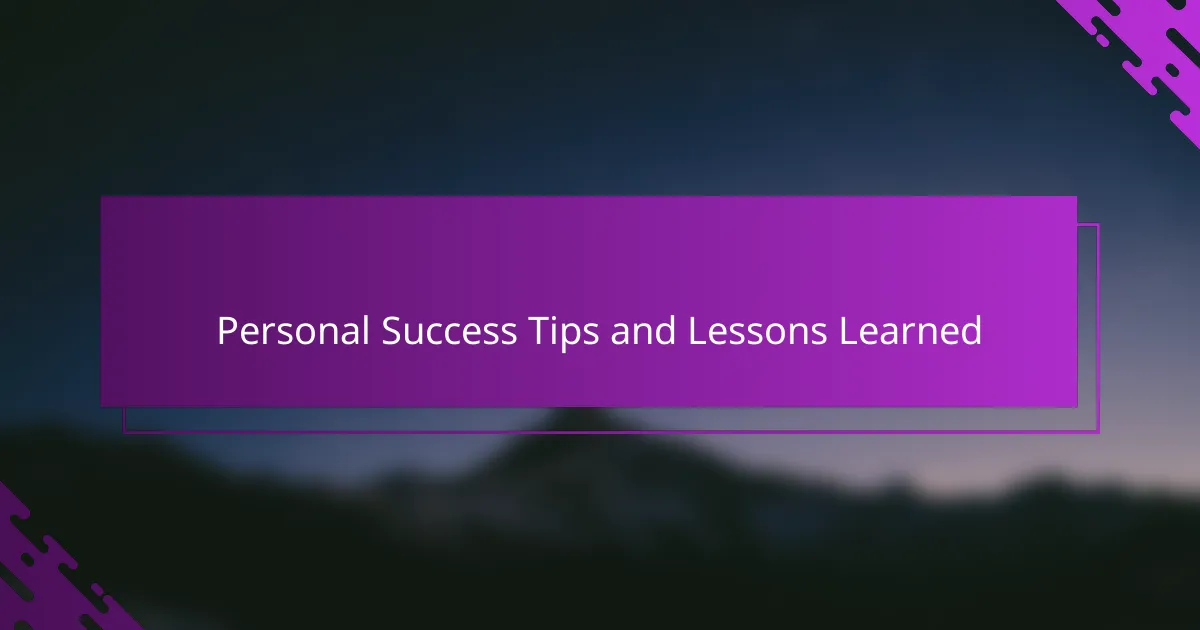
Personal Success Tips and Lessons Learned
One key lesson I learned early on is the importance of patience. Success with affiliate marketing didn’t happen overnight for me; there were moments of doubt when clicks were few and commissions even fewer. Have you ever felt that frustration? But sticking with consistent effort and refining my approach made all the difference in the long run.
I also discovered that blending authenticity with strategy is crucial. It’s tempting to chase the highest commission rates, but I found that recommending products I genuinely believed in not only kept my conscience clear but also built trust with my readers. Isn’t that honesty what makes a blog stand out among countless others?
Lastly, I realized that flexibility is vital. Trends shift, algorithms change, and readers’ interests evolve. Being willing to learn, adapt, and experiment kept my affiliate strategy fresh and effective. Have you noticed how staying open to change can turn obstacles into opportunities? That mindset became a personal success cornerstone for me.
